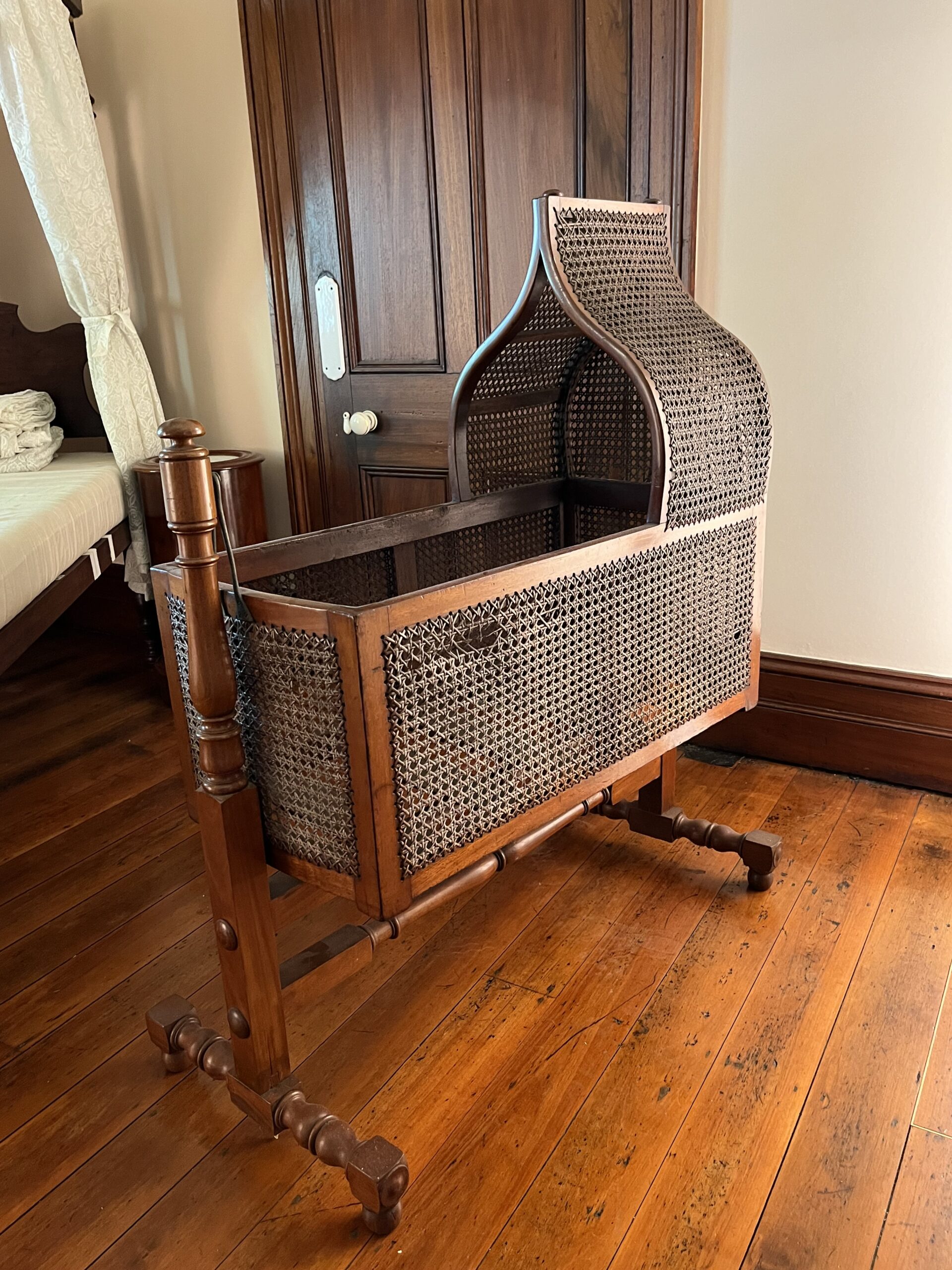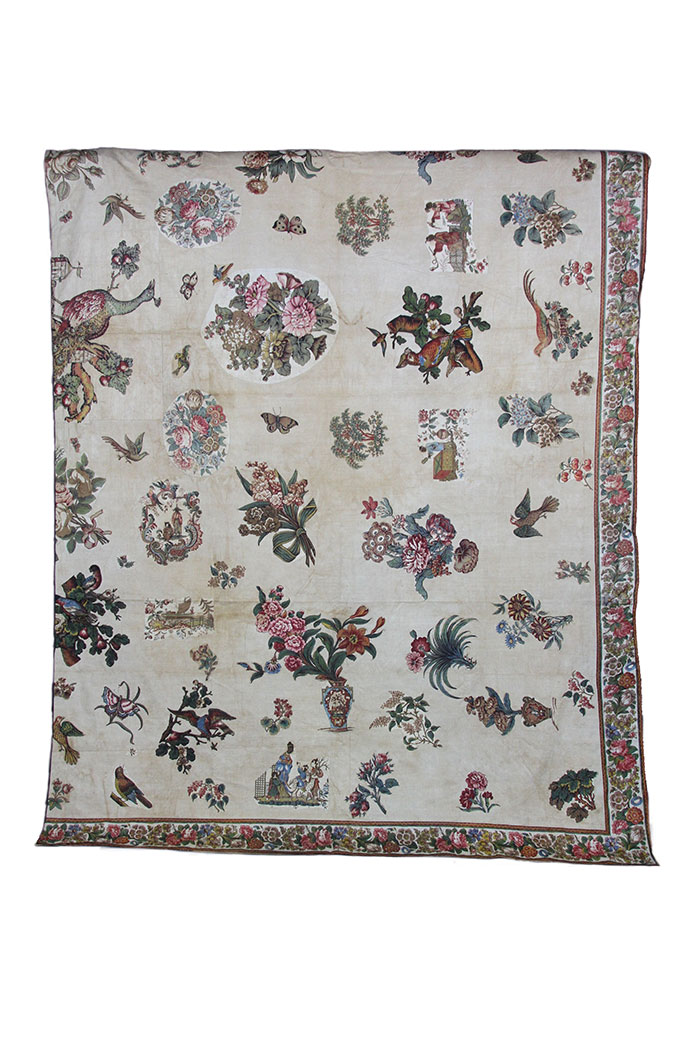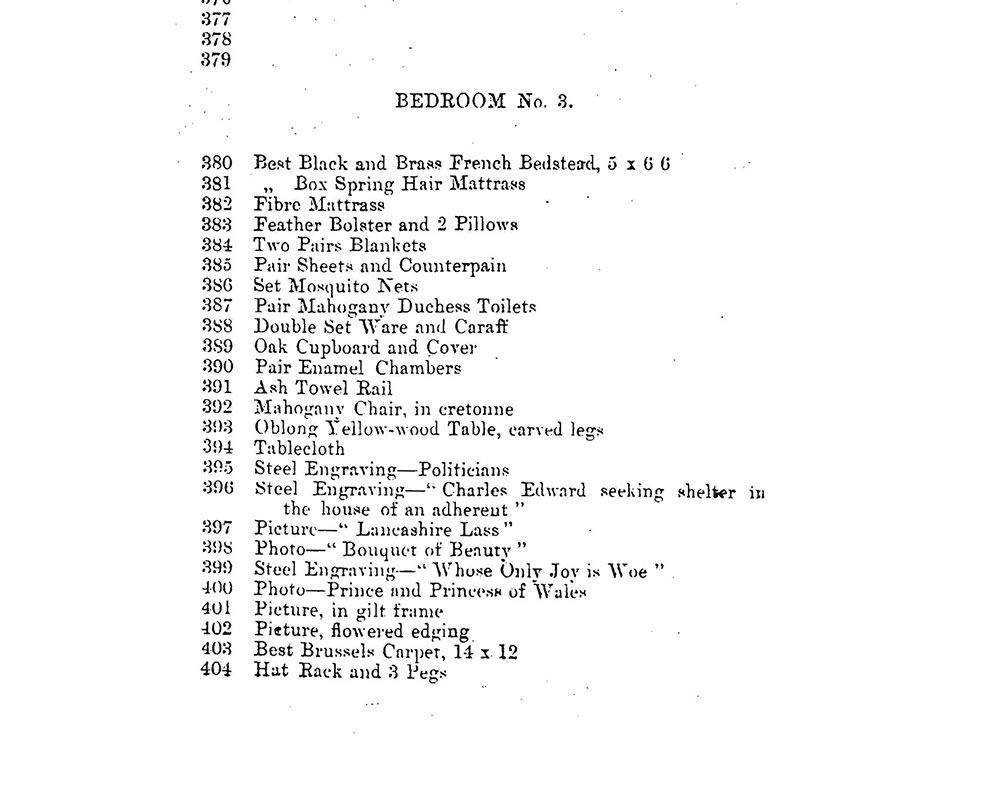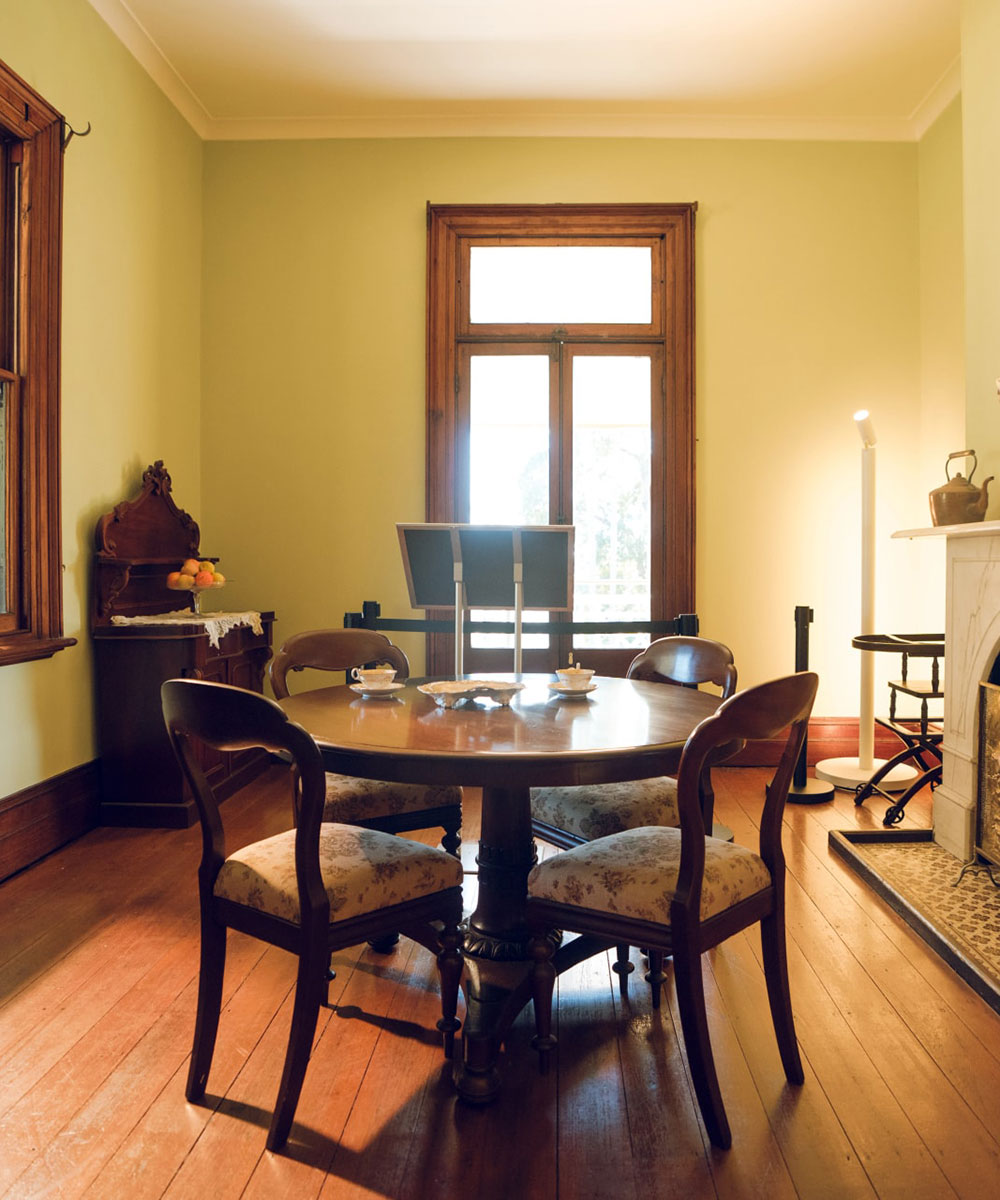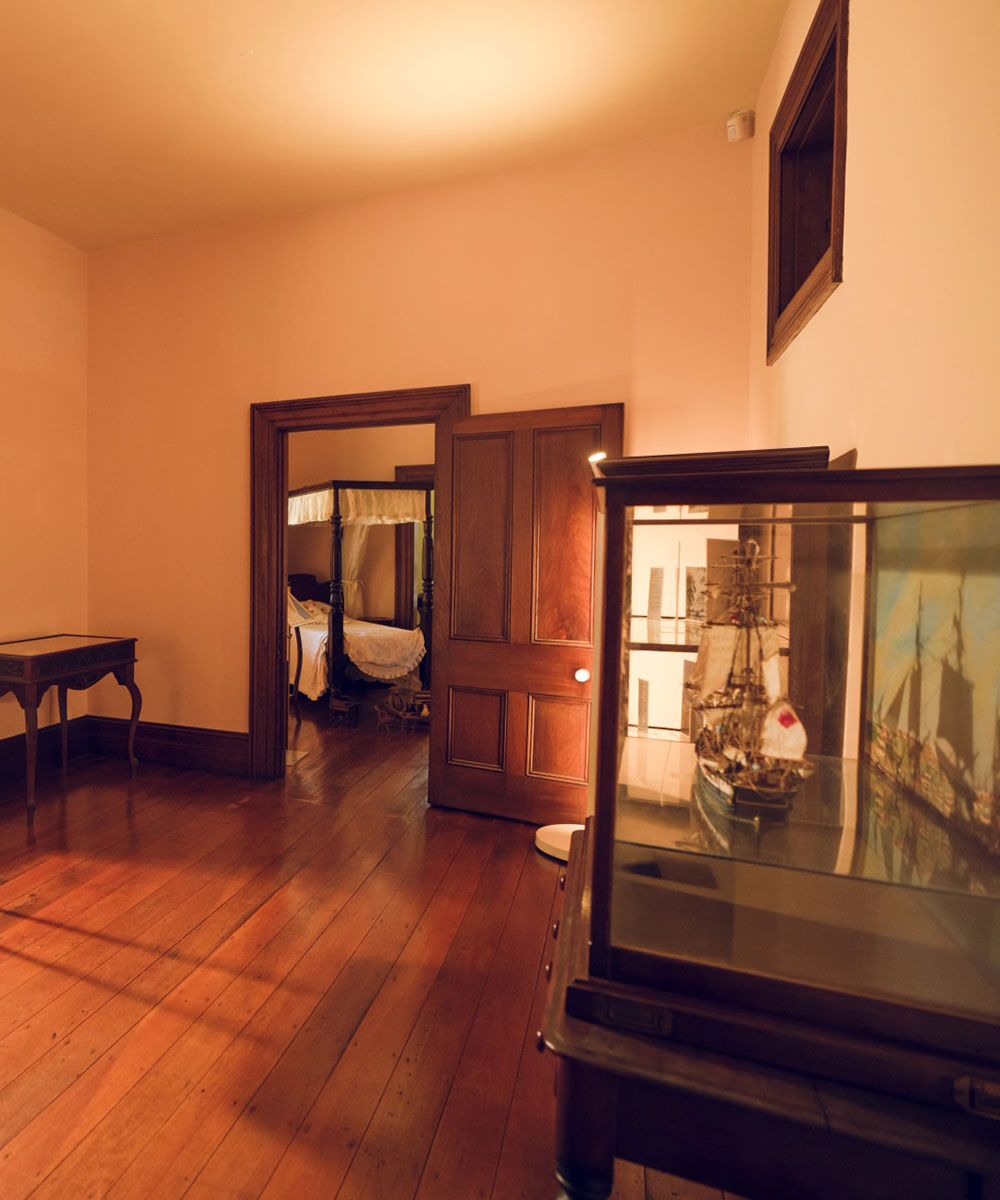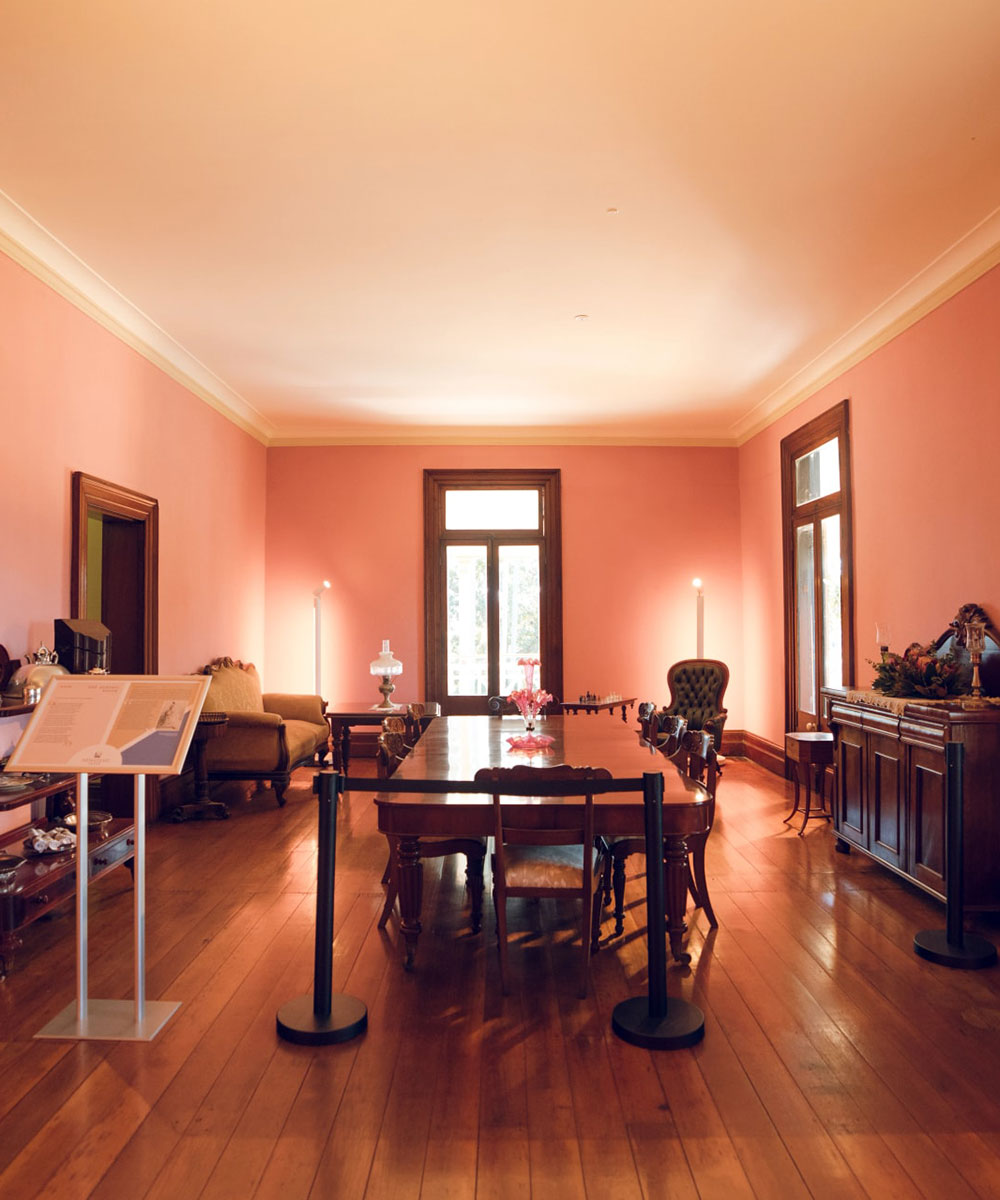Children’s Bedroom
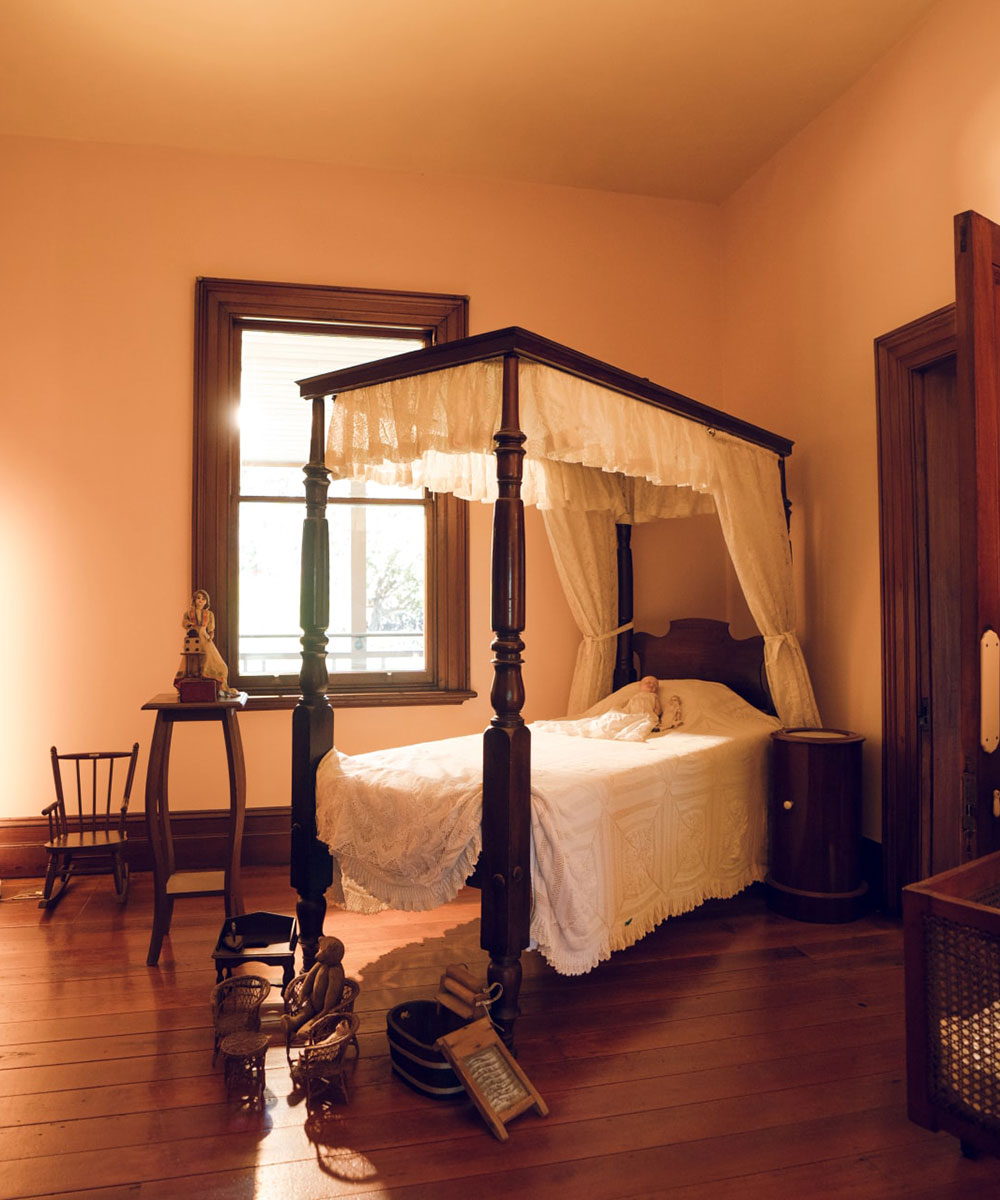
Like most grand Victorian Homes, there were two sides to Newstead House – the fancy spaces and the private spaces. Visitors to Newstead were rarely invited into the private rooms, which included the bedrooms. This was one of the children’s bedrooms.
Child’s play
Children’s toys in the 1800s were often intended to teach a skill or share moral lessons. The automation doll positioned on the table in this room from c1878, named ‘The Devil’s Dice’, was meant to illustrate the evils of gambling. Toy versions of laundry mangles and ironing boards were intended to teach young girls the importance of domestic work in what was perceived as the ultimate achievement for colonial women: a good marriage.
Children from families less wealthy than the Harrises would have had fewer toys, often making their own from whatever materials were on hand. Although many children didn’t go to school in the early years of the colony, with compulsory schooling only introduced in 1875, chores and work would have left little play time for the children of less wealthy families.
When the Harris children were small, they may have slept in a cradle such as the one above, which was made from mahogany and cane and was used by the Pettigrew family around the 1840s. It was donated to the Royal Historical Society of Queensland at Newstead House in 1967 by the granddaughter of William Pettigrew, owner of Brisbane’s first powered sawmill.
Fabric fashions
Handcrafted textiles added a personal touch to early colonial homes, providing comfort and meaning in what was often a new environment. Dress historian Dr Catriona Fisk writes:
“Many of these examples replicate and perpetuate the gendered and political power structures of British domestic culture, repeating images of Australia as part of the Empire or the importance of needle skills in the training of a ‘proper’ wife, but they can and should also be read as objects that express personal desires and values.”
Though there are many textiles in the Newstead House collection, most are too vulnerable to permanently display. This bedspread, photographed, is likely from the mid-1800s. It was made with broderie perse, or Persian embroidery, a form of textile collage where pieces of chintz patterns are cut out and attached to a new fabric base. As well as allowing the maker to create their own pattern, this technique also saved money by using small pieces of expensive fabric attached to a cheaper one.
What was in this room?
Scroll through the 1890 auction catalogue below to find out what was in this room.
Explore
3 Adjacent Rooms
Click on a room to find out more
